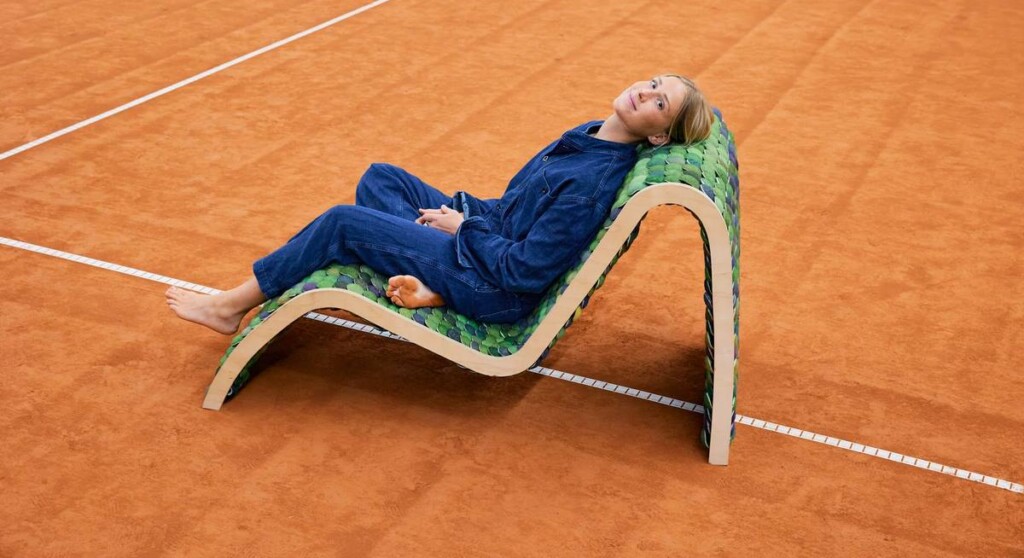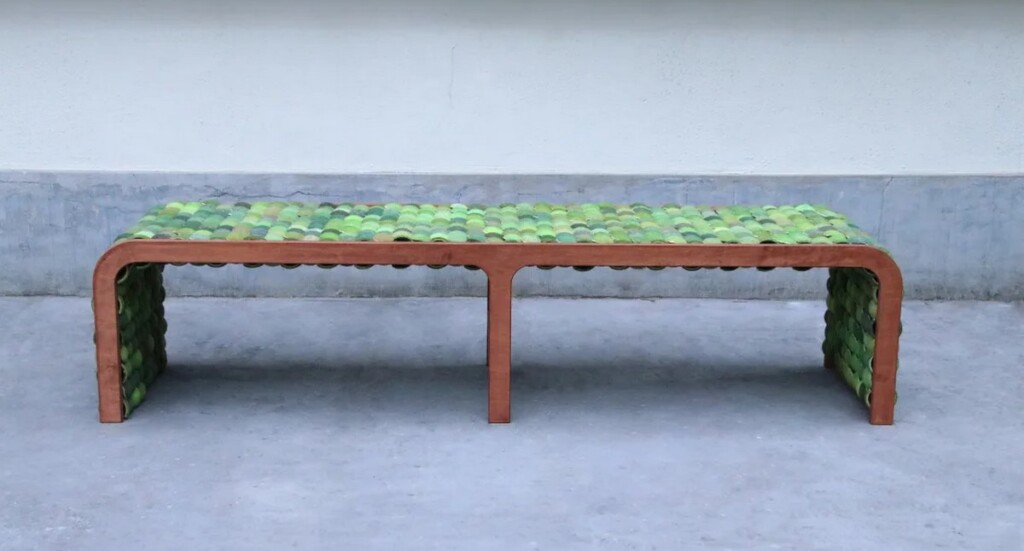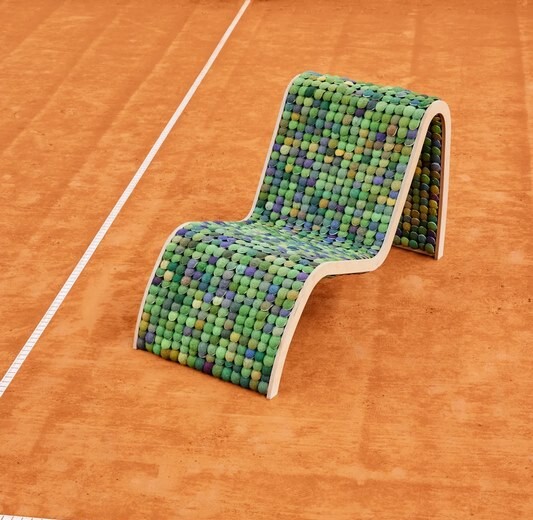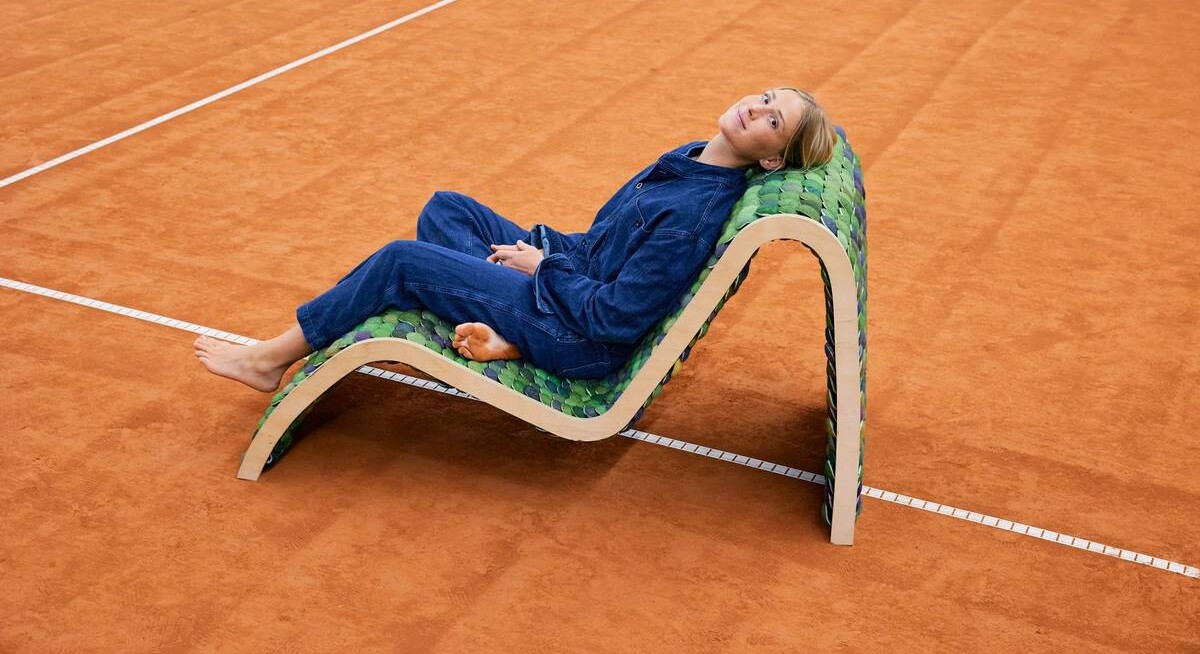
Every year, 300 million tennis balls are manufactured for the beloved sport, and almost all are throw out.
A Belgian eco-designer has begun to repurpose some of these into bespoke furniture in a circular way that ensures the rubber and felt balls don’t end up in landfills.

Mathilde Wittock and her team can hand carve 1,800 balls per day into micro-cushioning elements for a chaise lounge and a bench—her two flagship products.
To put that into perspective, 70,000 were used just in the recently concluded US Open.
They take around 2 to 3 weeks to make, but once they’re finished, one sees why it’s worth the wait. With the fuzz on the tennis balls dyed to match interior colors, they’re quite fetching, and must be delightfully comfortable.
“It takes around 24 different manufacturing steps to (make) a tennis ball, which is around five days. Then it has such a short lifespan,” Wittock told CNN in a video call from Brussels. “I was looking into tennis balls because I played tennis myself, so I know there is a lot of waste.”
Looking to find innovative sources of materials, the tennis balls seemed obvious because of their durability, short lifespan, and the fact that nearly all of them need 400 years to decompose in a landfill, provided they haven’t been given over to a dog first.

Tennis balls are filled with gas, which not only gives them their bounce but is also why the containers they come in are sealed like a soup can. Once open, the gas slowly leaves the core of the ball, leaving it flat and eventually unsuitable for the game.
TENNIS STORIES: Wimbledon Sports a Huge Smiling face – And it’s Made of Tennis Balls
Wittock receives donated tennis balls from sports clubs like the Federation of Wallonia in Belgium, which recently gave over its entire stock of 100,000 used tennis balls, which she says should provide for around 9 months of production.
“Eco-design is about circularity. You can use great materials that are low carbon emission or recycled, but you need to think of the end cycle,” she said. “If it’s not a circle, and if you can’t reuse (the elements) into something else, it’s not eco-design. It’s even worse, because it’s new materials.”
MORE CIRCULAR ECONOMIC NEWS: Shoes Made From Coffee Grounds and Recycled Plastic Bottles Are Not Only Waterproof But Super Comfy
Owners of the furniture can hand their pieces back to Wittock, who will burn away the fuzz and send the rubber shells out for shredding, where they will be repurposed into bouncy play mats for kids.
SHARE This Wacky Bespoke Furniture That Keeps Waste Out Of Landfills…





















Many thanks to Ms. Wittock for creatively using tennis balls for eco-design. We need more people like her in the world to help us rethink our products. Thanks again, Ms. Wittock!